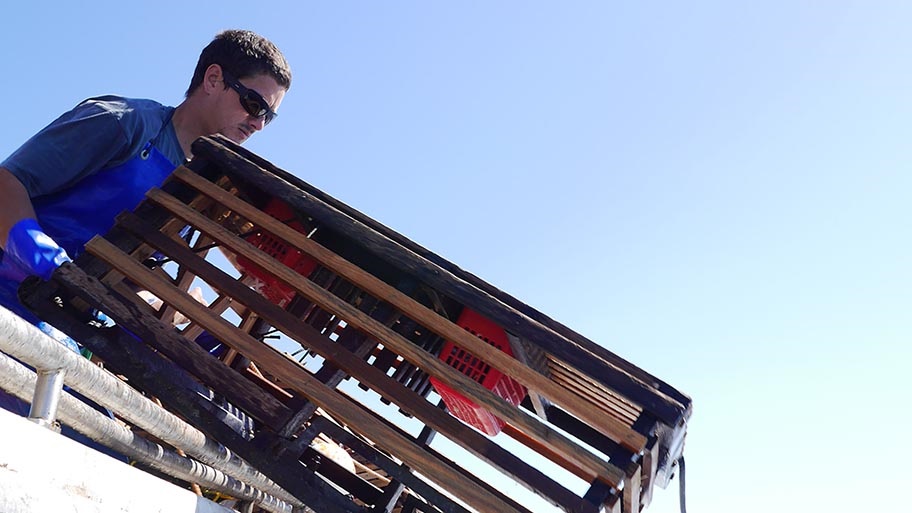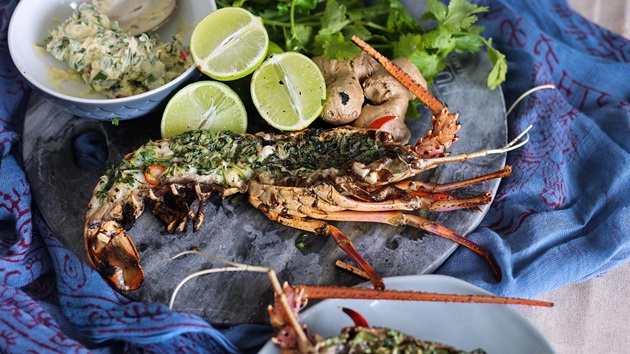By Will Little
The fishery has come a long way from its early days in the 1900s. Most of the Western Australia (WA) lobster caught then was canned and exported abroad for military rations, now it is associated with high-end dining.
Boosted by migration from Southern Europe in the 1950s, the demand for lobster grew with the fishery seeing a 600% increase in production in the 1960s.
Sustainability pioneers
A significant chapter in the story of this pioneering fishery is its ongoing certification to the MSC Standard for sustainable fishing. In March 2000, the fishery was the first in the world to be certified and has since become the first to be certified five times.
Over more than twenty years, the fishery has continued to implement new practices to comply with rigorous requirements as the MSC Fisheries Standard is updated.
“The MSC's benchmark continues to go up, but within that, our rock lobster fishery has become a world leader in achieving the standard that other fisheries have then adopted” said James Paratore, who works on his family boat three days a week with his father.
Now in its 25th year, the MSC has added new requirements to its Fisheries Standard, including an updated approach to protect endangered, threatened and protected species.
Achieving and maintaining sustainability has been challenging, but these trailblazers who showed the way to MSC certification “will continue to take the lead,” says Paratore.
The Western Australia rock lobster fishery
1st
The fishery was the first ever to be certified sustainable to the MSC Standard in 2000.
239 boats
In the WA rock lobster fleet
5 times
Certified to the MSC Fisheries Standard
AU$400 million
Value of fishery to Western Australia economy (approx.)
Hard work
Annually, the rock lobster industry contributes about $400 million dollars to the Western Australian economy and is the biggest and most valuable single-species wild-catch fishery in Australia.Paratore works part-time as a doctor so he can also work on the family boat, which he has done all his life. It’s not something he wants to give up, despite the 4am starts: “We work around my clinic hours, the weather, the markets and demand, to try and find the best times to fish.”
His family boat is one of 230 in the WA’s lobster fishing fleet. The family has 84 pots and are out on the boat for 8 -10 hours. “That’s 2.5 hours travel and about 6 to 7 hours of actual physical work”, he says.

But it's still the fishing where the real hard work is carried out. Despite a few timesaving developments, it still sounds as tough as it ever was. "The 'old-timers' would have you believe that they had it tougher. In many respects that’s probably true. They would work seven days per week and in the days prior to the hydraulic winch many would pull their 'pots' up by hand. But the pots were much lighter then. A modern day 'slat' pot has a steel base and either jarrah [a hard wood] or pine frame and battens.
"Pots seem so much heavier on the first pull of the season. There is a technique to lifting these pots, otherwise they cause back injury. You tend to use the pitch, yaw and roll of the boat to help you stack the pots."
Riding the crest of the wave
Protecting sea lions
Innovation and adaptation are key characteristics to maintaining certification and something the fishery had to lean on to stop the tragic incidence of young sea lions becoming entangled and trapped in lobster pots. While this was always a rare and localised occurrence it was nevertheless one that needed to be addressed to maintain their MSC certification."Sea lions are inherently playful and it is the pups that tend to get in trouble," says Paratore. "I suspect they are chasing food though and their inquisitive nature likely attracts them to the pot."
Paratore says that even though rare, it was distressing for any fisher to find a sea lion pup in the pot, so it was a relief that a solution was found.
Innovative Sea Lion Excluder Devices (SLEDs) that blocked access to the pots by young sea lions were introduced to the fishery. The result was significant. After the use of SLEDs became mandatory across the fishery, the number of sea lion mortalities dropped from 20 in 2006 to zero in 2012 and there have been no fatalities since.
2012
Sea lion excluder devices become mandatory
2012-2020
Zero sea lion mortalities
Science and government
Engaging with the MSC has also brought wider changes to the industry. Dr Lynda Bellchambers, Principal Research Scientist at the Department of Primary Industries and Regional Development (DPIRD), of the Government of Western Australia, says engaging with the MSC Standard has been challenging but has meant both fisheries and government have been forced to improve."The MSC process forced industry and government to better document or formalise governance processes, and this extended across non-MSC certified fisheries," she says. The Government of Western Australia has supported the fishery since the start of its journey to MSC certification, helping it to improve management procedures and assessing stock levels.
For example, most WA fisheries now have formal harvest strategies supported by ecological risk assessments. "It has led to greater transparency and accountability for government and industry," says Bellchambers.
Western Rock Lobster - Science and Sustainability
Certification as catalyst for change
Dr Bellchambers says that MSC certification also meant that the fishery and the government had to put more resources and focus to protect endangered, threatened and protected species, and assess the impact of fishing on the ecosystem and marine habitat."There have certainly been changes to the 'at sea' operations as well. For example, SLEDs, various gear modifications to minimise entanglement of humpback whales and prohibition of bait bands on fishing vessels to prevent entanglement with dusky whaler [sharks]." Bait bands are plastic packing straps that secure cartons of bulk bait and when washed into the ocean can pose a significant threat to a range of marine life, including sea lions, seals and sharks.
Simon de Lestang, Principal Research Scientist for the Government of Western Australia, backs this up: "All of this work would either not have been implemented as quickly or would not have been done to the extent it has been without the inputs measured against the MSC sustainability benchmark."
For Paratore, sustainable fishing is in the DNA of local family run fishing businesses. He says that multi-generational fishers want to protect the ocean and the resource for future generations, and leave it in even better shape than what we inherited.
“I am confident that we are achieving these two objectives each and every day as we continue to strive for improvement,” concludes Paratore.
Sustainable Seafood Guide
Where to buy, what to look for and the questions to ask.

